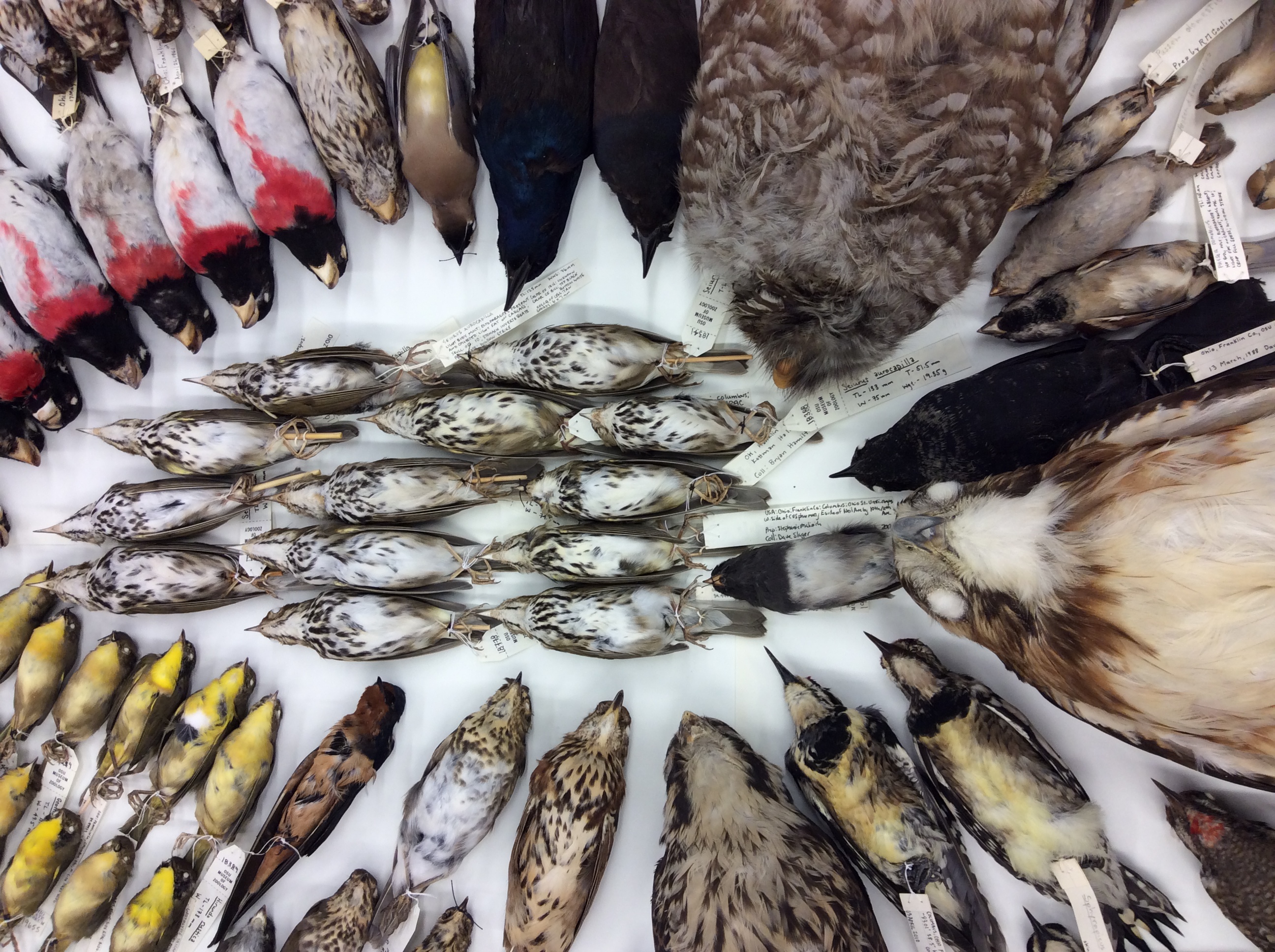You may think that a collection of dead animals does not require much work. You may want to rethink this, because every specimen needs to be cataloged, geo-referenced, i.e. we try to find the exact geographic location where it was found. We need to keep out insects that may cause severe damage to our specimens by eating them up, people want to borrow specimens for teaching, research and arts projects. These are just some of the tasks; we are also still adding new specimens to the collection. This collection would not be functioning without the help of some undergraduate students. Meet the team currently working in the collection:
Emily Archibald, an Evolution and Ecology major, has been mainly interested in the mammal collection and is re-organizing our many coyote skulls for teaching and research.
Stephanie Malinich graduated from OSU last spring, but she discovered her love for museum work as a student. She has been back as the “bird-skinner in-charge” since September. Stephanie has learned how to prepare museum study skins through some workshops with Dr. Jackie Augustine at the OSU Lima campus. She is always looking for new challenges, her newest project: preparing a skeleton of a Red-tailed Hawk with one spread wing.
Rebecca Price, a Zoology major, has come to the collection as a volunteer. She has since taught herself the skill of bird study skin preparation and is now working together with Stephanie. Just recently she prepared a Pileated Woodpecker!
Anna Smith, a Molecular genetics major, discovered the tetrapod collection as a volunteer for our Open House last year. She has since re-organized the mammal teaching collection, labelled many skulls and bones as well as newly prepared bird skins.




